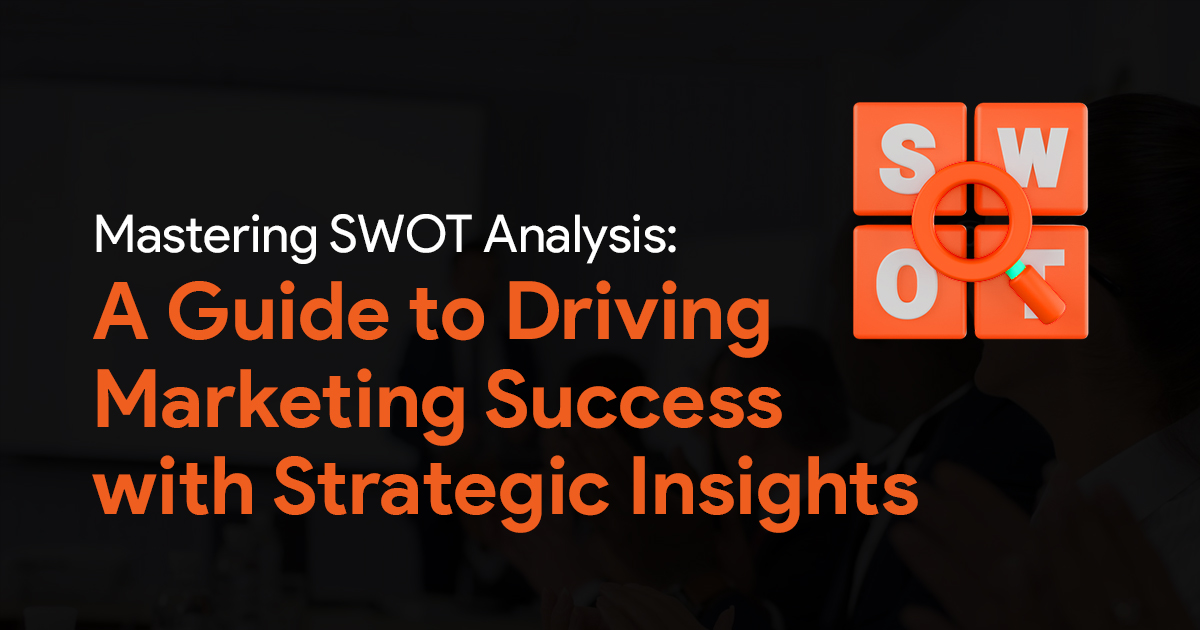Role of strategic planning in business growth
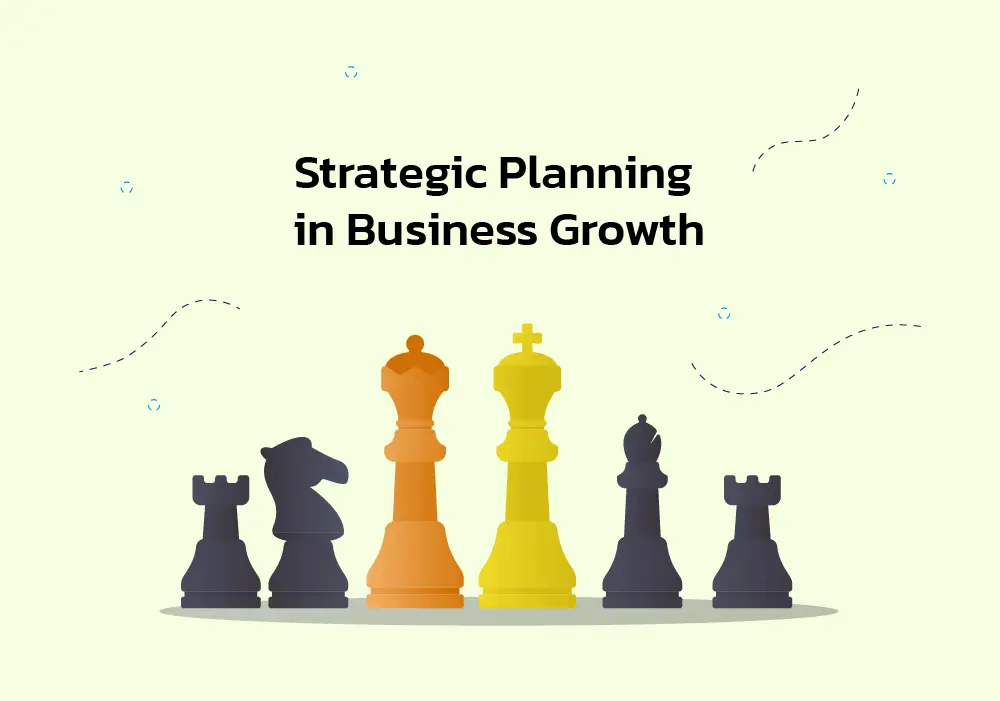
The term “strategy” is being used in different realms of our life. Whether confronting family problems, or problems in workplaces, people often advise developing a strategy to solve such problems. Thus, we can see people have a common cognition about the term “strategy”. However, strategy development involves several scientific steps and procedures. Most of them don’t have proper knowledge about the step by step process of strategy development. In this article, we would like to uncover the facts and figures behind strategy development for business growth.
What is strategic planning?
Strategic planning is the method of documenting and forming a direction of your business—by measuring both where you standing and where you’re going. The strategic plan provides you with a room to outline your mission, vision, and values, as well as your long-term objectives and the action plans you’ll use to achieve them. A well-written strategic proposal can play an essential role in your business’s growth and success because it tells you and your workers how best to react to opportunities and challenges.
Corporate businesses are always looking for strategic planning in a long-term platform. In the case of a small business, this won’t. Despite the benefits of having a strategic plan in place, a growing number of small business holders aren’t focusing on the long-term strategies of their businesses. Advance planning doesn’t go with small businesses. Studies show most of the small business owners outlining their strategies only for the maximum one-year horizon. If you’re one of these small business proprietors, it’s not too late to think differently.
Your business success hinges on effective strategic planning. It’s a process of looking ahead that should contain your whole business, and the brainstorms can lead to meaningful changes in your business. Strategic planning consists of analyzing the business and setting accurate goals and aims. This leads to the creation of an official document that lays out the company’s views and goals for the future.
Benefits of strategic planning
Strategic planning needs excellent knowledge of market affairs. So, market research or a good hypothetical assumption (in the case of small business) based on own experience is essential for well-organized strategic planning. It may take time, but it is beneficial for everyone involved. As the small business owner, you’ll have a clear-cut idea of the objectives and goals you want to achieve and a path to do that. For your staffs, the procedures can nurture an increase in productivity—contributing to the success of the business.
Share Your Strategic Plan with your employees
You have to participate in all of your employees in your strategic planning process. Your workers are involved in the day-to-day operations and can provide you with a unique outlook of the company. Employees can communicate with you what they think and they can offer their own viewpoints which help to increase company productivity while planning your business strategy. Moreover, it’s beneficial to reach out to people outside of your company to get their views. Like your workers, dealers have a unique perspective on your industry. Talk to them about the business, and get their opinions on how they think the business setting can change in the future.

The strategic planning process should be a flexible one. When you meet with your staffs and any people external to the company, remember that the consultations should inspire new ideas and thoughts.
Increase Productivity
Including your workers in the strategic planning process also means they receive a sense of responsibility that can increase productivity. Whether they contributed in the process or were informed of the business’s objectives and goals after the strategic plan was fashioned, they’ll be more likely to want to help you attain those targets.
Identifying Strengths and Weaknesses
As part of the strategic planning process, you’ll inspect and analyze your entire business. You’ll take a look at what your business does well and the areas where it still needs to improve. By identifying your business’s current strengths and weaknesses, the process gives you and your workers an opportunity to improve in the future and become a resilient business by minimizing risks. SWOT analysis is an inevitable tool that improves your business standing and makes fit to compete with your nearest rivals.
While you may have a good idea about what your business shines at and zones that need to be improved upon, don’t forget to involve your workers. They may tell you something you didn’t think of.
Establishing the direction of the business and creating a proactive business plan
At the end of the strategic planning process, you and your employees should decide the direction that you want to go in the future. These deliberations and the planning process itself help put the business in the best position to succeed in the future. Strategic planning gives you and your business time to figure out how to grow over the next few years and how to address new openings and encounters. Think about the tests or issues your business may face in four or five years and plan accordingly, so your business never breakdown on the halfway mark.
Do small businesses wrongly felt the meaning of strategic planning?
People in small business areas have a misconception that strategic planning is only for corporate businesses. This is a wrong understanding; sometimes it is because of the efforts behind the planning. but remember, strategic planning in small business only need your determination and the cooperation of your employees. It wouldn’t be a high-expensive work when you are incorporating your own experience and assumptions regarding the current and future market scenarios. But don’t be frightened; strategic planning can help your business—big or small—and the benefits far outweigh any observed negatives.
Irrespective of the size of your business, a strategic plan is beneficial. Whether you are a small business or a large corporation with hundreds or thousands of workers, strategic planning helps you make sure the company is directed in the right way.
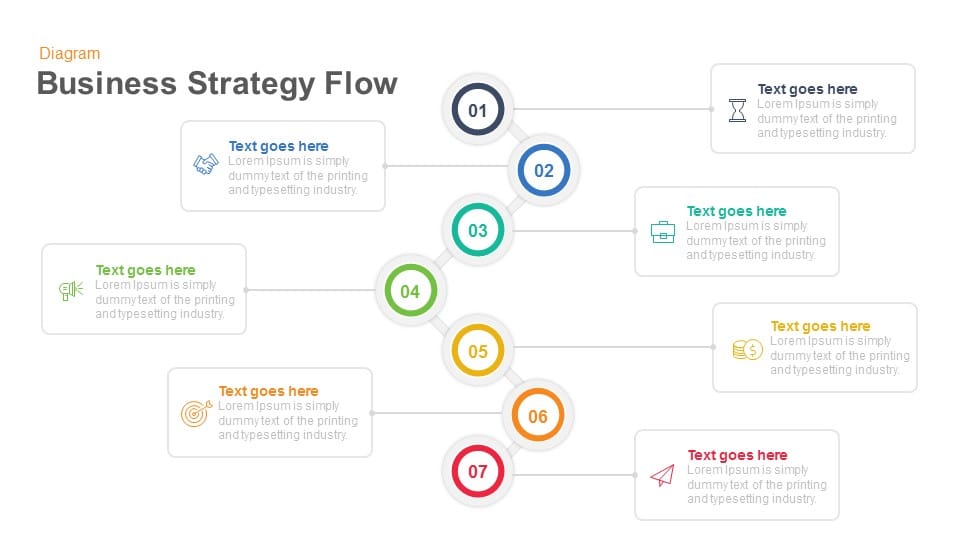
help template: business strategy PowerPoint flowchart
But how do you know if you’re navigating the company in the right way? The opening phases of strategic planning focus on investigation and deliberations. The conclusions you make during strategic planning aren’t based on assumptions; (but in the case of a small business, I repeatedly say your assumptions based on your experience have its own role to play) they’re based on research and information you’ve gathered while talking with your staffs and individuals outside of your company.
The strategic planning process may appear daunting at first, but when you comprehend what’s involved and how to do it, it’s not that problematical. It takes time, but the amount you spend in the process pays off when everyone in your company works toward achieving the goals and objectives you’ve put forward.
The progression doesn’t standstill creativity either. When you talk about your strategic planning, you’re asking everyone to have a discussion and brainstorm thoughts. The strategic planning process puts everyone’s minds together to think of innovative ideas.
If you go through the strategic planning process once, don’t think you won’t have to do it again. The strategic plan is an active document; it should modify over time. It’s not unusual for business owners to create a strategic plan with their staffs and rarely—or never—revisit the document. Revising and assessing your strategic plan frequently will help keep you responsible and on track to achieve your goals and intentions.
What Makes Strategic Planning Successful?
Effective strategic planning involves a team effort among you and your workers, as well as among you and your dealers and other outside people. The more you involve your workers with strategic planning, the better they’ll know the strategy you want to have for your business.
Strategic planning also necessities to be flexible. While it’s essential to have goals and purposes for your business, you also have to be able to adjust to modifications. It may take you longer than anticipated to attain a particular goal; identify that this isn’t an issue and that you can integrate changes to your plan to put you in a better position to flourish.
Three important phases of strategic planning
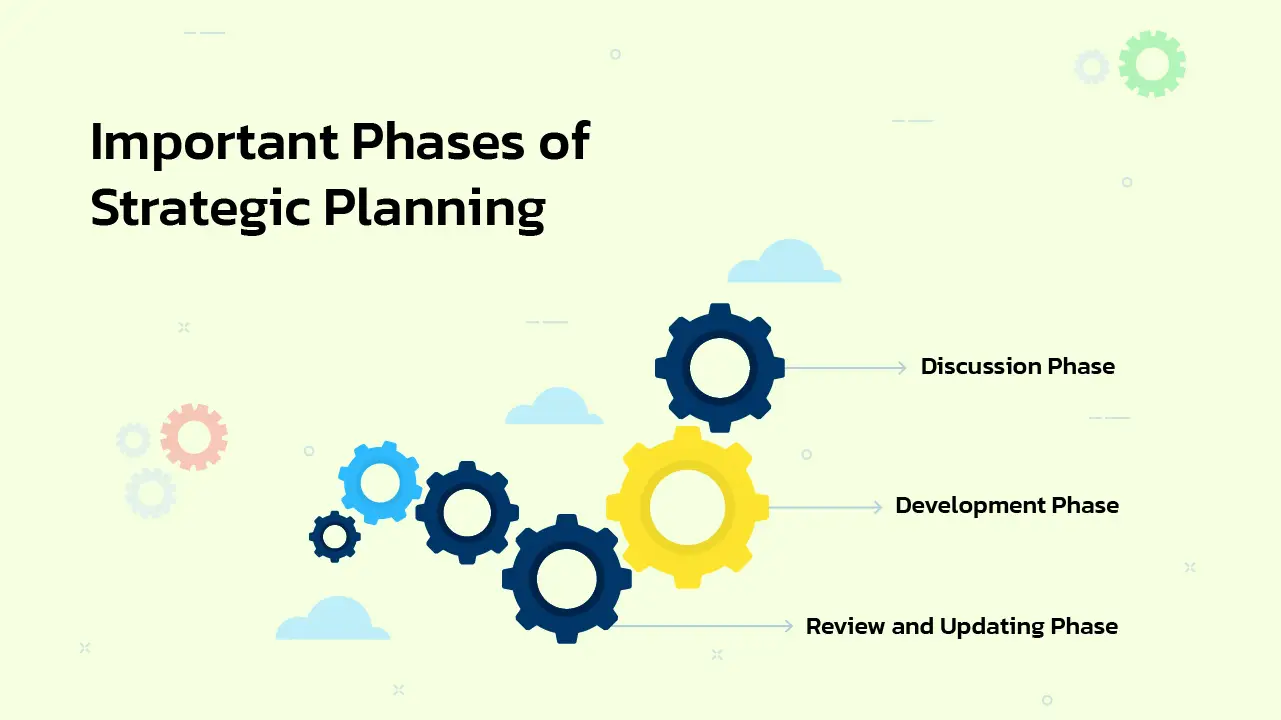
Discussion phase
The discussion phase is meant to collect as much data, views, and input as possible. Set up a frequently scheduled meeting with the employees and any other staff in your business who will be involved with strategic planning. Make sure you have an agenda and clear outlooks of what you want to achieve in each meeting. This will keep discussions on track and help stop distractions. In the first few meetings, try to answer questions that will help you define the business’s existing status, such as, “Where are we now?” and “Where are our competitors?” Once you have a good idea of where the business is, you can focus in on specific details in future meetings.
In addition to regular get-togethers with your workers at your business, you can also reach out to dealers, stockholders, analysts, and other people outside of your company to gather information. Outside people will have a unique viewpoint on not only your business but also the industry you’re operating in. Receiving their opinions on where they think the industry is going and what they think will change in the future can help you put together your strategic plan and determine where you want your business to be placed on.
You can also conduct a SWOT analysis. SWOT stands for Strengths, Weaknesses, Opportunities, and Threats. When you’re conducting a SWOT analysis, you and your workers will look at what your business does well, where it can progress, any future opportunities to follow that could help enable growth and success, and any challengers or external factors that could inhibit the business from succeeding.
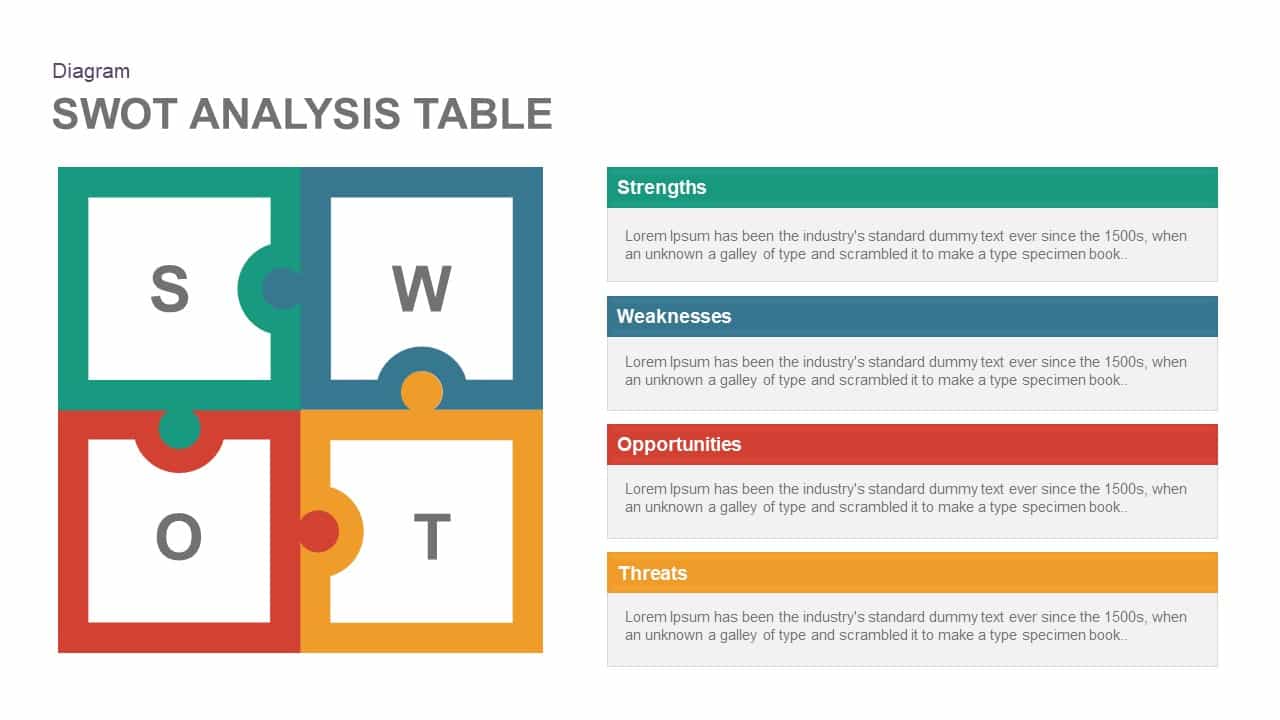
help template: SWOT analysis PowerPoint
Your strengths should be pretty easy to identify. When you’re discussing your business’s weaknesses, don’t be afraid to be open. Every business has an Achilles heel and things to work on. Any weakness you and your worker’s note means it’s something you’ll target to improve on in the future with a detailed initiative charted in the strategic plan.
Opportunities presented to your business may be pretty clear, while finding threats to your business can be more problematic. Speaking with persons outside of the company should give you a good idea of where the industry could be heading and if there are any major opponents or challenges coming. If you can identify a number of dangers and challenges to your business early on, it puts you in a better position to address them if and when you encounter them down the road.
Development Phase
After gathering all information, then you go to the development phase. This is when you’ll start setting organized your business’s strategic plan. A strategic plan involves five key elements: a vision statement, a mission statement, goals and objectives, an action plan, and details on how often the strategic plan will be revised and restructured.
Decide with your staffs what you will use to make the strategic plan. Are you going to buying software to help you generate and house the plan? Or are you going to create the plan yourself and store it in the cloud for easier access?
When you’re making objectives and goals for your business, make sure they’re realistic and quantifiable. Work with your staffs to create goals and objectives for at least the next one to three years. And chat how these goals and objectives will be measured and chased.
For instance, if you have a goal of increasing sales by 10% in the next year, you can track this by computing sale numbers. Equally important is having an action plan to attain these goals and objectives. If you’re trying to upturn your sales by 10% in a year, you can follow more marketing and social media propagation as part of your action plan. If an action plan doesn’t help your business achieve its goals, the plan needs to be modified.
Review and Updating Phase
A crucial part of the strategic plan should address how often it will be revised and updated. Entrust someone to be in charge of reviewing, updating, and sharing any alterations with the rest of the business. Whether it’s you or another worker, you’ll want to make sure everyone in the business is conscious of the changes and how they influence the overall strategic plan. If you developed significant objectives and action plans, they should help with frequently checking the strategic plan. For instance, if your action plan needs you to put in sales numbers every quarter to track income, you could take that time to review the rest of the proposal.


